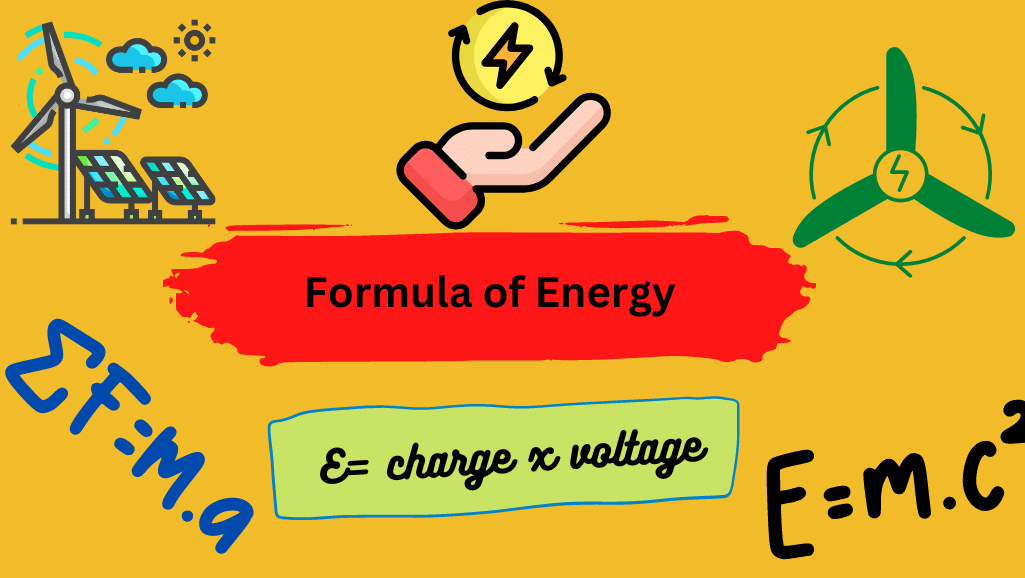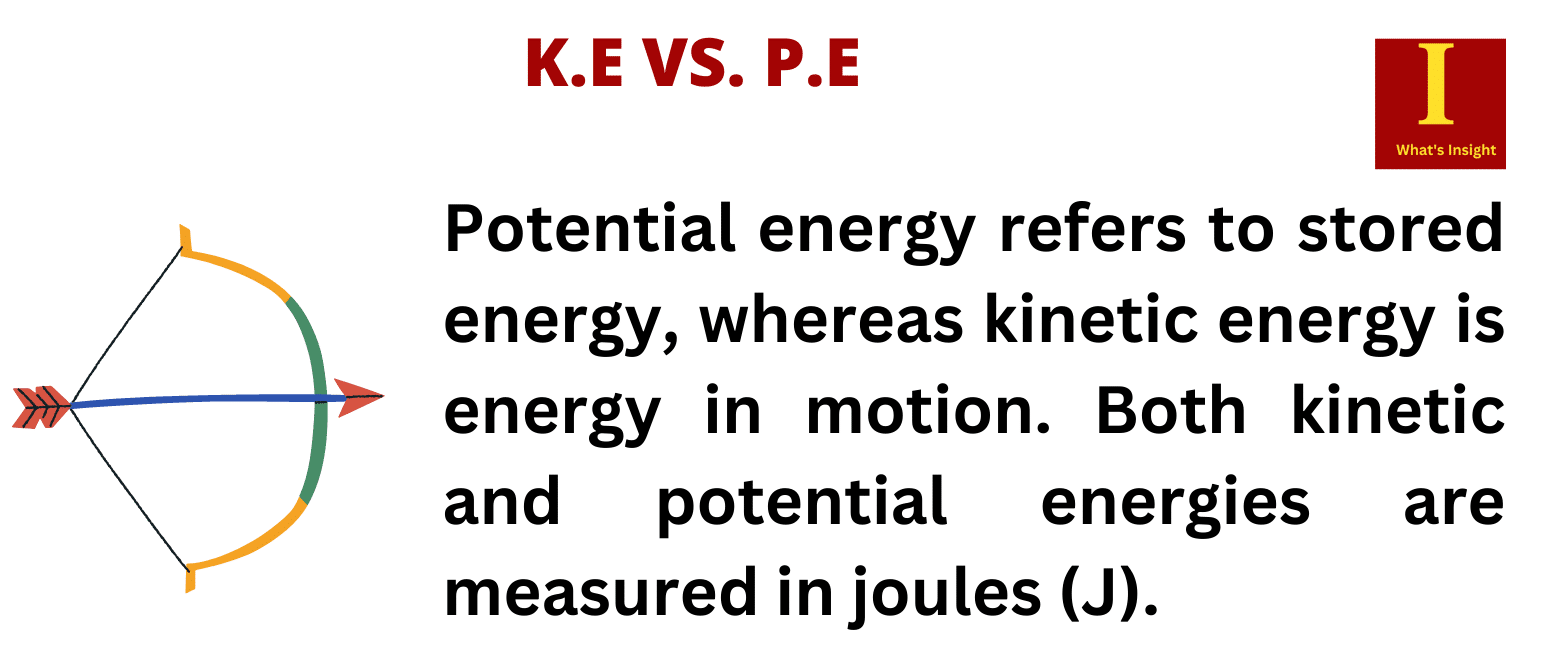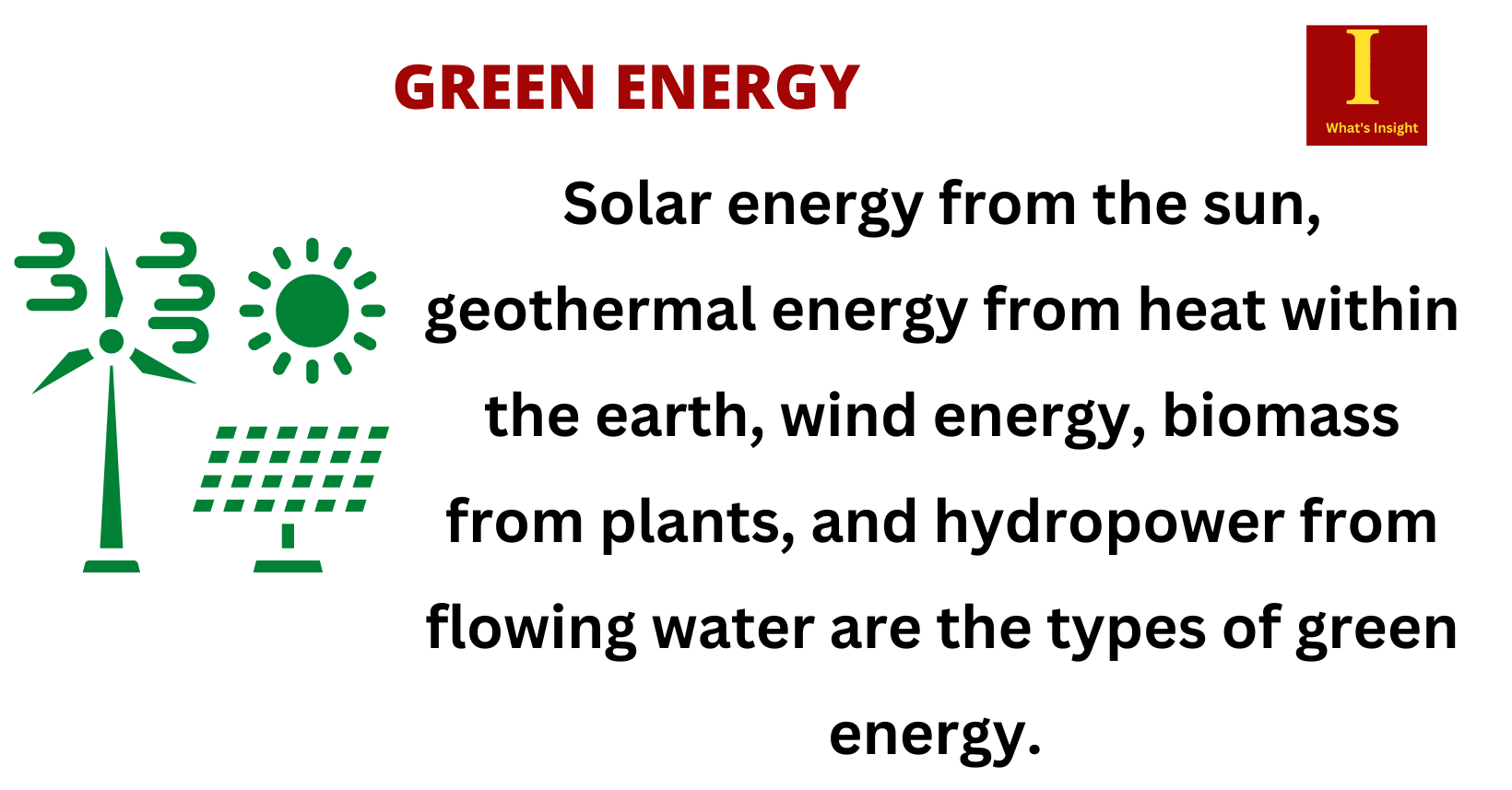Energy is defined as the ability to perform work. Energy comes in a variety of forms. Here are some examples of common energy types.
Table of Contents
1. Thermal Energy
Thermal energy is the energy produced by heat. It is the kinetic energy associated with the random movement of molecules in a material. The kinetic energy of molecules increases as matter’s temperature rises. The terms “heat” and “heat energy” are frequently used interchangeably. The SI unit of thermal energy is joules (J).
The thermal energy equation is given as Q=mcΔT, where Q is heat energy or thermal energy, m is mass, c is the specific heat capacity and ΔT is the change in temperature.
Here are some examples of thermal energy that you are likely to be familiar with:

- the sun is the largest thermal energy source in our solar system
- The heat from a heater
- Curling irons and coffeemakers use thermal energy
- Thermal energy from a fire warms a person’s hands
- Automobile fuels are also a source of thermal energy
| Type of Thermal Energy | Formula | Unit | Example |
|---|---|---|---|
| Heat Energy | Q = mcΔT | Joules (J) | Heating water in a kettle |
| Specific Heat Capacity | c = Q/(mΔT) | J/(kg·K) | Heating a metal rod |
| Thermal Energy | E = mcΔT | Joules (J) | Heating a room with a heater |
| Heat Capacity | C = Q/ΔT | J/K | Measuring the heat capacity of a calorimeter |
| Entropy | S = Q/T | J/K | Measuring the entropy of a system |
| Thermal Conductivity | K = (Q/t)(L/AΔT) | W/(m·K) | Measuring the thermal conductivity of a material |
| Stefan-Boltzmann Law | E = σT^4 | W/m^2 | Calculating the thermal energy emitted by a star |
2. Mechanical Energy
The Mechanical energy of an object is the sum of its kinetic energy and potential energy of the object.
The formula of mechanical energy is:
Emech = Kinetic energy + Potential energy
Emech = 0.5 x mass x velocity2 + mass x gravity x height
m is the mass of an object, v is the velocity, h is the height, and g is the gravitational force.
Daily life examples of mechanical energy are listed below:
- A moving bicycle
- Rotating windmill
- Releasing an arrow from a bow
- Our body converts chemical potential to Mechanical energy
| Type of Mechanical Energy | Formula | Unit | Example |
|---|---|---|---|
| Kinetic Energy | KE = 0.5mv^2 | Joules (J) | A moving car |
| Potential Energy | PE = mgh | Joules (J) | A rock on top of a hill |
| Elastic Potential Energy | U = 0.5kx^2 | Joules (J) | A compressed spring |
| Gravitational Potential Energy | GPE = -GmM/r | Joules (J) | A satellite in orbit |
| Mechanical Power | P = Fv | Watts (W) | A weightlifter lifting weights |
| Work | W = Fd cos(θ) | Joules (J) | Lifting a heavy box |
| Impulse | J = Ft | Newton-seconds (N·s) | Kicking a soccer ball |
3. Chemical Energy
Chemical energy is the stored energy in the bonds of atoms and molecules. This energy is released when this chemical reaction occurs. To drive, we use chemical energy in the form of gasoline.

| Type of Chemical Energy | Formula | Unit | Example |
|---|---|---|---|
| Bond Energy | E = sum of bond energies of reactants – sum of bond energies of products | kJ/mol | Burning of natural gas (CH4) |
| Enthalpy Change | ΔH = H(products) – H(reactants) | kJ/mol | Combustion of methane (CH4) |
| Free Energy | ΔG = ΔH – TΔS | kJ/mol | Photosynthesis |
| Activation Energy | Ea | kJ/mol | The energy required to start a chemical reaction |
| Heat of Formation | ΔHf | kJ/mol | The heat released or absorbed when a compound is formed from its elements |
| Ionization Energy | IE | kJ/mol | The energy required to remove an electron from an atom or ion |
| Electron Affinity | EA | kJ/mol | The energy released when an electron is added to an atom or ion |
4. Potential Energy
Potential energy refers to the energy an object possesses by virtue of its position. Two main types of potential energy are:
- Gravitational potential energy
- Elastic potential energy
5. Gravitational Potential Energy
Gravitational potential energy is the energy that an object has as a result of its position in a gravitational field. If the object is lifted straight up at a constant speed, the force required to lift it to the height is equal to its weight.
The formula of gravitational potential energy is given as:
P.Egrav = weight x height = mass x gravity x height
The unit of gravitational potential energy is Joule. Some daily life examples of gravitational potential energy are listed below:
- Upward movement of an air-filled balloon
- Movement of pendulum
- A rock placed on a height
6. Elastic Potential Energy
Elastic potential energy is the energy stored in elastic materials as a result of stretching or compressing. Elastic potential energy, for example, is stored in a stretched rubber band, springs, or trampolines. Furthermore, the relative positioning of various system components affects elastic potential energy. The potential energy of a spring, for example, increases when it is compressed or expanded.

| Type | Definition | Formula | Unit | Example |
|---|---|---|---|---|
| Gravitational potential energy | Energy possessed by an object due to its position relative to the Earth’s surface | PE = mgh | Joules (J) | A book with a mass of 2 kg is placed on a shelf that is 3 meters high. Its gravitational potential energy is PE = (2 kg)(9.81 m/s^2)(3 m) = 58.86 J |
| Elastic potential energy | Energy stored in a stretched or compressed elastic material | PE = 1/2 kx^2 | Joules (J) | A spring with a spring constant of 20 N/m is compressed by 0.1 meters. Its elastic potential energy is PE = 1/2 (20 N/m)(0.1 m)^2 = 0.1 J |
| Electric potential energy | Energy possessed by an object due to its position relative to a charged object | PE = kQq/r | Joules (J) | Two charged particles with charges of 1 C and 2 C are separated by a distance of 3 meters. The electric potential energy between them is PE = (9 x 10^9 Nm^2/C^2)(1 C)(2 C)/(3 m) = 6 x 10^9 J |
| Chemical potential energy | Energy stored in chemical bonds | Dependent on specific reaction | Joules (J) | The combustion of 1 mole of methane releases 890 kJ of chemical potential energy |
7. Kinetic Energy
Kinetic energy is the energy that a moving object possesses as a result of its motion. The more kinetic energy an object has, the faster it moves. A moving object’s kinetic energy equals one-half the product of its mass and the square of its velocity. The kinetic energy formula is given as:
Kinetic energy = 0.5 x mass x velocity2
Daily life examples of kinetic energy are listed below:
- Rotation of wind turbines
- A bullet fired from a gun has kinetic energy and can penetrate a target.
- Movement of a car or bicycle
| Type | Definition | Formula | Unit | Example |
|---|---|---|---|---|
| Translational kinetic energy | Energy possessed by an object due to its motion | KE = 1/2mv^2 | Joules (J) | A car with a mass of 1000 kg is traveling at a speed of 20 m/s. Its translational kinetic energy is KE = 1/2 (1000 kg)(20 m/s)^2 = 200,000 J |
| Rotational kinetic energy | Energy possessed by an object due to its rotational motion | KE = 1/2Iω^2 | Joules (J) | A solid sphere with a moment of inertia of 2/5 mr^2 is rotating at an angular velocity of 10 rad/s. Its rotational kinetic energy is KE = 1/2 (2/5 mr^2)(10 rad/s)^2 = 100/2 mr^2 J |
| Vibrational kinetic energy | Energy possessed by an object due to its vibrational motion | KE = 1/2kx^2 | Joules (J) | A mass on a spring with a spring constant of 20 N/m is displaced by 0.1 meters. Its vibrational kinetic energy is KE = 1/2 (20 N/m)(0.1 m)^2 = 0.1 J |
| Thermal kinetic energy | Energy possessed by the random motion of atoms and molecules in a substance | KE = 3/2kT per molecule | Joules (J) | A mole of an ideal gas at room temperature (298 K) has an average thermal kinetic energy of KE = (3/2)(1.38 x 10^-23 J/K)(298 K) = 6.21 x 10^-21 J per molecule |
8. Light Energy
Light is an example of electromagnetic radiation. It is composed of photons (energy packets) generated when material atoms heat up. Light travels in waves and is the only type of energy that the human eye can see.
Light travels at high speeds, but its velocity is finite. In a vacuum, the speed of light is 186,282 miles per second (or nearly 300,000 kilometres per second). Some examples of light energy are listed below:
- Sun is a major source of light energy
- Light from a glowing bulb
- Stars and other luminous bodies emit light
- Laser light
| Aspect of Light Energy | Description |
|---|---|
| Nature of Light | Light energy is a form of electromagnetic radiation, which is a type of energy that travels through space as a combination of electric and magnetic fields. Light is typically defined by its wavelength, frequency, or energy. |
| Uses of Light Energy | 1. Providing energy for photosynthesis in plants 2. Allowing us to see and perceive the world around us 3. Transmitting information in the form of radio waves, microwaves, and other types of electromagnetic radiation 4. Providing heat and energy for various industrial processes 5. Used in technologies such as lasers, solar cells, and fiber optic communication systems. |
9. Ionization Energy
The ionisation energy is the energy required to remove electrons from an atom, and the ionisation potential is the equivalent electrical potential (i.e. the energy divided by a single electron charge). These terms are also used to describe molecule and solid ionisation, but the values are not constant because ionisation is affected by local chemistry, geometry, and temperature.
10. Electromagnetic Energy
Electromagnetic energy is an invisible transverse waveform of energy. It is the only type of energy in our universe that does not need to travel on or through a medium or matter. Electromagnetic energy can travel through empty space as a transverse wave. A simple example of electromagnetic energy is light energy. Light energy is an example of electromagnetic energy. Some examples of electromagnetic energy are listed below:
- x rays
- radio waves
- gamma rays
- Infrared ray
- Radar waves
- microwaves

11. Strain Energy
Strain energy is the energy that a body stores as a result of deformation. The strain energy per unit volume is described by the terms strain energy density and the area under the stress-strain curve towards the point of deformation. When the applied force is removed, the entire system returns to its original state.
To understand the strain energy formula consider a rod of length “L” and weight is applied on either side of the rod. The rod deforms by a length (ΔL) as a result of the imposed load. The strain energy formula is given as:
Strain energy (U) = Work done (W) = F x ΔL/2
12. Bio Energy
Bioenergy is defined as energy derived from biomass. Biomass is the material that is burned or processed to generate bioenergy. It is made up of organic material that comes from living organisms like plants and animals. Some sources of biomass are listed below:
- Wood
- Algae
- Sewage from livestock
13. Wind Energy
Wind energy is the process of generating electricity from wind. Wind turbines convert wind kinetic energy into mechanical power. Wind turbines use blades to acquire wind kinetic energy. The wind blows over the blades, creating lift (similar to the effect on aeroplane wings) and turning them. The blades are connected to a drive shaft that turns an electric generator, which produces electricity. The daily life significance of wind energy is listed below:
- Generating electricity
- Milling grains
- Pumping water
14. Sound Energy
Sound energy is generated from vibrations moving through something. Sound energy is transmitted as energy waves by solids, liquids, and gases. When a force, such as sound or pressure, causes an object or substance to vibrate, sound energy is produced.
To generate sound energy, the oscillations between compression and rarefaction move through gaseous, liquid, or solid media. The frequency of a sound wave is determined by the number of compression/rarefaction cycles in a given period.
15. Gibbs free energy
The Gibbs free energy of a system is defined as the system’s enthalpy minus the product of the system’s temperature and entropy. The formula of Gibbs free energy is given as:
G = H – TS
or
G = U +PV – TS
Where
- T is the temperature (K)
- S is entropy ( joule/kelvin)
- H is the enthalpy (joule)
- U is the internal energy (joule)
- P is pressure (pascal)
- V is the volume (m3)
Multiple Choice Questions
- Which of the following is an example of potential energy?
a. A person running
b. A ball rolling down a hill
c. A stretched rubber band
d. A car driving on the highway
Answer: c. A stretched rubber band
- What is the formula for calculating kinetic energy?
a. PE = mgh
b. E = mc^2
c. KE = 1/2mv^2
d. P = W/t
Answer: c. KE = 1/2mv^2
- Which of the following is an example of thermal energy?
a. A moving car
b. A person lifting a weight
c. A boiling pot of water
d. A battery-powered flashlight
Answer: c. A boiling pot of water
- Which of the following factors affects ionization energy?
a. Atomic weight
b. Electron shielding
c. Chemical reactivity
d. Surface area
Answer: b. Electron shielding
- What is the energy source for nuclear power plants?
a. Fossil fuels
b. Wind
c. Solar
d. Nuclear reactions
Answer: d. Nuclear reactions
More Links
| Power Units- The Basics | Reynold’s Number Formula |
| Endothermic vs. Exothermic | Photoelectric Effect Formula |
| Condensation Reaction| Easy Explanation | Fluid Friction| Definition, Types, and Factors Affecting |
- BCl3 Lewis Structure in four simple steps - November 1, 2023
- PH3 Lewis Structure in four simple steps - October 8, 2023
- PF3 Lewis structure in four simple steps - September 24, 2023



